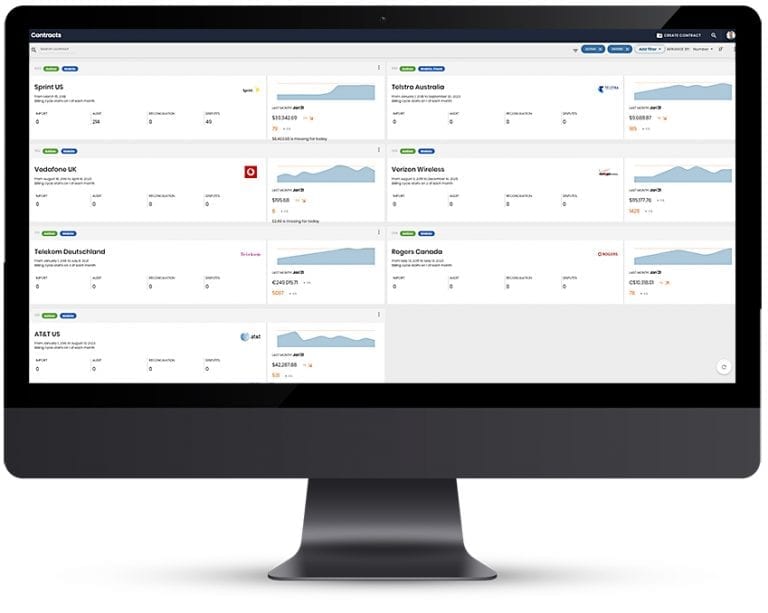Carrier reps are pushing unlimited plans hard.
Here are six things to consider before making your decision.
The solution sounds simple at first: move all your lines to unlimited and the carriers will give you a lower rate so you don’t have to manage those lines or bother with a TEM. On the surface, this sounds pretty good. But there are only a small percentage of organizations where this actually makes sense. Here are six things to consider when the carriers approach with this sales pitch.
Watch the full video here or scroll down for short clips:
1. Unlimited plans are throttled.
Unlimited plans typically come with a throttling feature. The carriers even market their non-unlimited plans as having premium data access. So of course, unlimited is no longer premium. That throttling means when you hit a certain threshold, around 60 gigabytes (though the carriers don’t publish this), they move you from 5G back to 4G. Which is a pretty big hit in terms of user experience.
They also deprioritize unlimited plan traffic. So as soon as congestion happens, whether or not you’re being throttled, you start suffering from a suboptimal experience. Let’s say you have business-critical needs on your devices, like a Teams chat while you’re at the airport and you need video available.
Well, that suboptimal experience might be the difference between a flawless meeting and annoyed coworkers who can’t understand you.
2. If throttling becomes an issue, you may pay even more to get back on a premium data plan.
A lot of the time we see MiFi or IoT devices that hit throttling limits which then need to be converted over to different plans. The reality is that organizations can’t allow these devices to be throttled because they are a critical piece on job sites. Organizations often have to move hundreds of devices off unlimited plans to construct a large enough data pool. We find that moving those devices off unlimited so the business can function often comes with headaches and a substantial cost increase.
3. Contracted minimums could force you to pay more in the long run.
Contracts with unlimited plans often come with minimum line counts and revenue amounts that organizations have to maintain with the carrier. And carriers often assume that enterprises have the tools needed to manage their environment to the contract terms.
As a result, we see enterprises that are afraid to take action when they lose employees or when employees turn over. This is where unlimited plans really have a negative effect. As those employees turn over, you’re afraid to disconnect those lines and risk violating the new carrier agreement that you’ve signed. So optimizing or managing the true number of employees you have using devices becomes a real challenge. And the carriers don’t enable you with the tools to have the visibility of who’s using a device versus who’s not using a device.
The enterprise and the carrier are not equipped to answer these questions easily, which is where the value of a product like brightfin comes into play. It enables those enterprises to maximize their contracts and leverage the capabilities of what the carrier has offered while also maintaining the accuracy of inventory and usage.
4. Most devices don’t need unlimited plans and actually cost more on one.
There are very few users who actually need unlimited plans based on their current consumption. Going back to the 1990s, the best way for carriers to make money was to sell somebody a plan that’s above the threshold they actually need. During the early days when people were consuming 1 GB, carriers wanted you to buy 3 GB plans. When our consumption got to 3 GB, they wanted you to buy 5 GB. Now, with large data plans available at a low cost, they’re pushing for unlimited to lock in your spending – even though many of your users are going to be below the data threshold most of the time.
“One of our large customers moved to unlimited plans, like the carrier recommended. When analyzing their spend, we found that they were overpaying by $14,000 per month on iPads alone. After we rolled iPads off of unlimited plans and pooled users under 4 GB, they saved $168,000 per year.”
5. Your interests and the carrier’s interests are not always aligned.
One thing that we often hear, and combat in our space, is a misalignment between the carrier’s interest versus the enterprise. You, as the enterprise consumer, are seeking to buy technology that fits a specific business case. The carrier has a different objective within your business: they’re trying to manage how many lines of service can they activate, and keep active, to make sure that they are making a profit. Ultimately these unlimited plans are an attempt by the carriers to maintain consistent line counts.
So, it’s important to ask, as the carriers approach you with these new opportunities, do they have the best interest of you and your end users in mind? And are you really optimizing your organization’s objectives by putting employees on unlimited plans that risk a poor technology experience when they’re in the field?
6. Support levels, visibility, and tools may be degraded.
Carriers are scaling back in the support provided to enterprises as more and more users are being sent to self-service modules. When you pick up the phone to call your sales rep, that person no longer has access to the backend support, themselves. One of the valuable services that’s provided by brightfin is that we manage that process with the carriers all day long. We know how to get around the difficulties and barriers in executing MACDs.
Another challenge is that the carriers don’t provide you with the tools to get proper visibility, so it’s impossible to answer simple questions like:
- How much data is our organization consuming?
- Which employees are driving that data consumption?
- How do I manage the intake and outtake of employees into my business?
- And how do I connect that to the carrier systems?
When you switch to these unlimited plans and you consider removing a service like brightfin, you really limit your organization’s ability to understand and manage its mobile environment.





